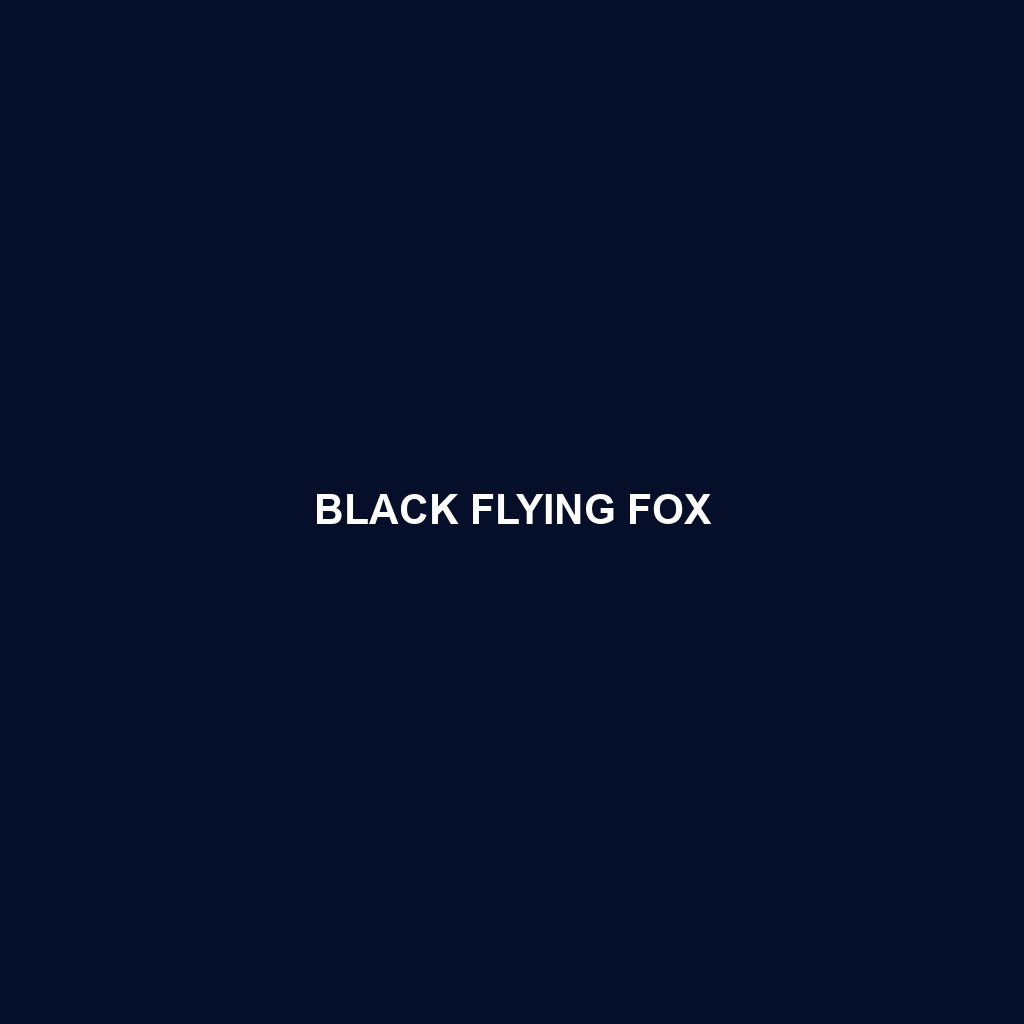Black Flying Fox (Pteropus alecto)
Common Name: Black Flying Fox
Scientific Name: Pteropus alecto
Habitat
The Black Flying Fox is primarily found in subtropical and tropical forests of eastern Australia, including regions like Queensland and New South Wales. This species prefers areas with abundant fruiting trees, such as rainforests and mangroves, which provide essential foraging grounds. Their habitat extends into urban areas where large trees are present, allowing them to adapt to changing environments.
Physical Characteristics
Black Flying Foxes are one of the largest bat species, with a wingspan that can reach up to 1.5 meters (approximately 5 feet). They exhibit a striking dark fur coat that varies from deep black to dark brown, with distinctive elongated faces and large eyes. Their size and unique features make them easily identifiable, which includes a bald face and a prominent snout.
Behavior
These fruit bats are nocturnal and are most active during the night, often roosting in large colonies during the day. The Black Flying Fox engages in social behaviors, utilizing vocalizations and body language to communicate within their colonies. During foraging, they demonstrate remarkable agility as they navigate through trees to locate food sources, which can often involve long-distance flights in search of ripe fruit.
Diet
The Black Flying Fox primarily feeds on nectar, pollen, and various fruits, which emphasize its role as a pollinator and seed disperser in its ecosystem. Common food sources include bananas, figs, and mangoes. Their feeding habits are crucial for the health of the forests they inhabit, as they aid in the reproduction of many fruit-bearing trees.
Reproduction
Breeding typically occurs once a year, with the main season occurring from September to December. Female Black Flying Foxes give birth to a single pup after a gestation period of approximately 5 to 6 months. Along with the maternal care, young bats rely on their mothers for food and protection until they are capable of foraging independently.
Conservation Status
The Black Flying Fox is currently listed as vulnerable due to habitat loss, climate change, and hunting pressures. Conservation efforts are crucial to protect their habitats and ensure the survival of this important species.
Interesting Facts
Did you know that the Black Flying Fox is capable of consuming up to 300 grams of fruit in a single night? These bats are also known for their impressive migratory abilities, traveling long distances in search of food during different seasons.
Role in Ecosystem
As important pollinators and seed dispersers, Black Flying Foxes play a vital role in maintaining the health of their ecosystems. Their feeding habits help promote the growth of various plant species, thus sustaining the biodiversity in their habitats. By facilitating the growth of new plants, they contribute significantly to forest regeneration and ecosystem stability.
